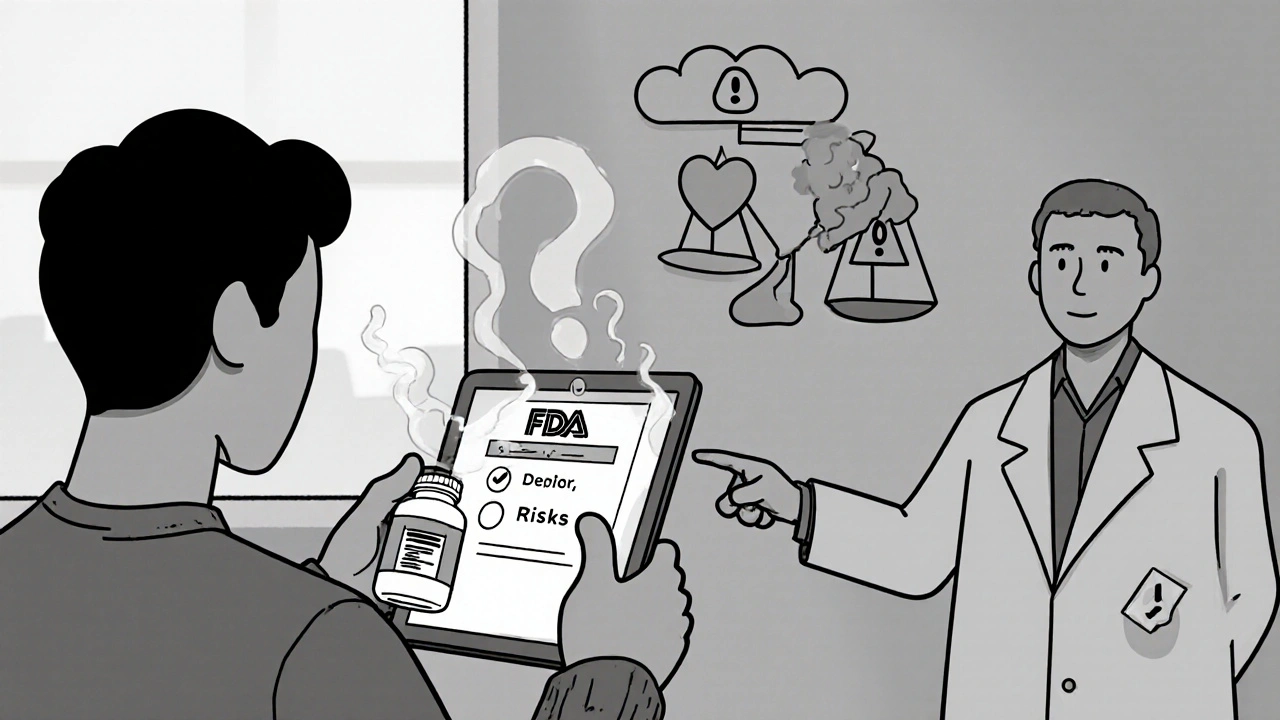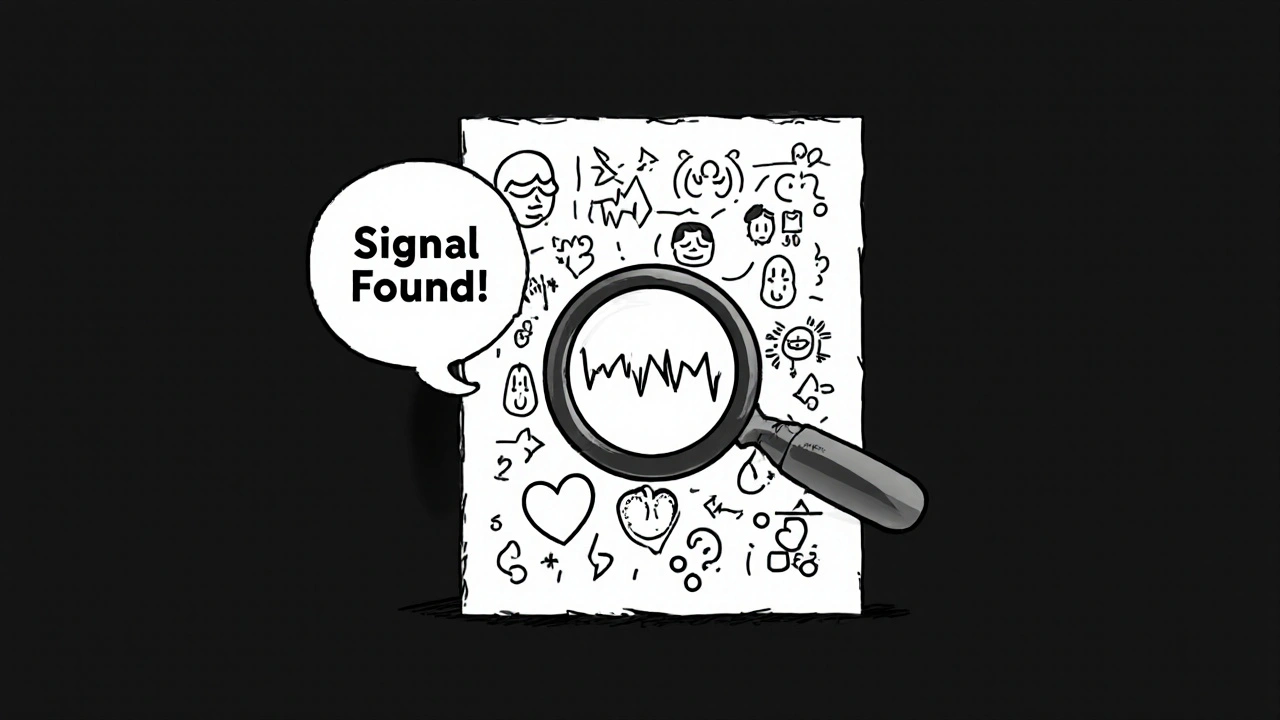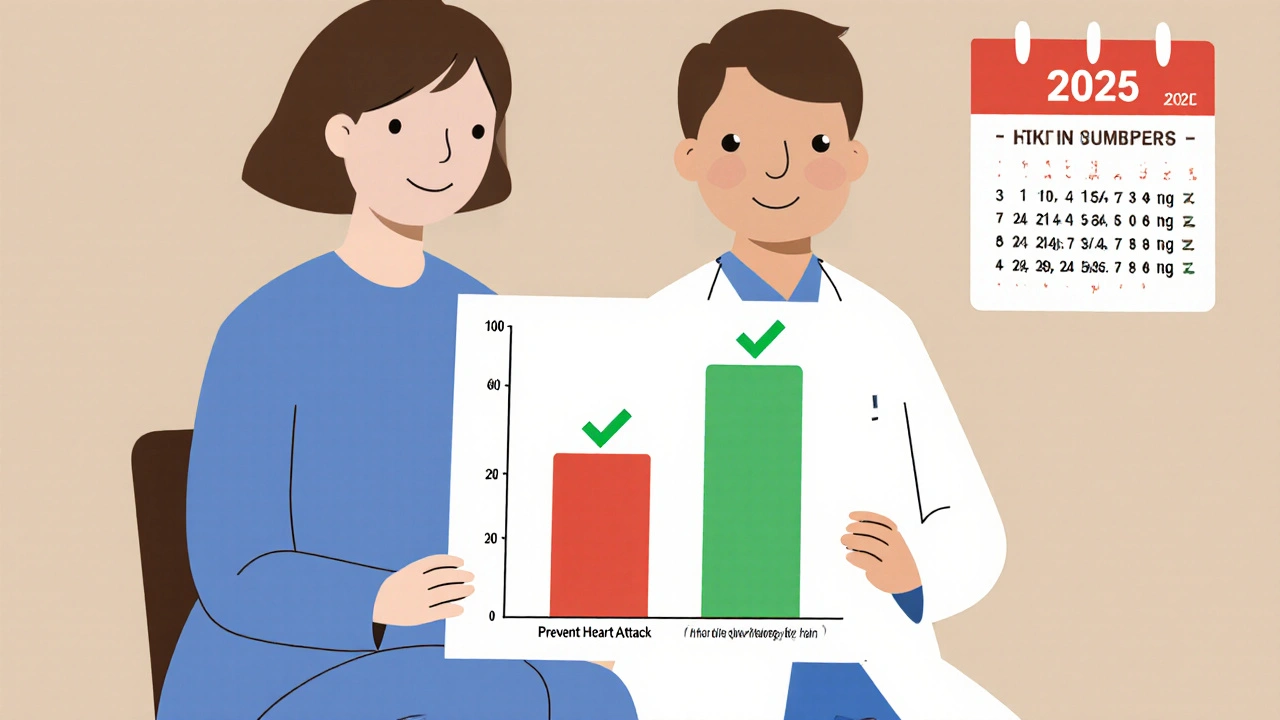
When you see an FDA safety alert about a medication you or someone you care about is taking, it’s natural to panic. A headline like "FDA warns of rare heart inflammation risk with drug X" can feel like a red flag - like you should stop taking it immediately. But that’s not always the right move. The FDA doesn’t issue these alerts because a drug is dangerous. They issue them because they’ve spotted something unusual in the data - and they need to figure out if it’s real, how often it happens, and whether the benefits still outweigh the risks.
What FDA Safety Announcements Actually Mean
The FDA doesn’t wait for a drug to cause widespread harm before acting. They monitor safety long after a drug hits the market. Clinical trials involve thousands of people. But once millions are using a drug - including older adults, pregnant women, or people with multiple health conditions - rare side effects can show up. That’s where the FDA Drug Safety Communication comes in. These aren’t warnings that say "stop this drug." They’re signals. Think of them like smoke detectors. Smoke doesn’t mean there’s a fire. It just means something’s off, and you need to check. The FDA gets about 1.2 million adverse event reports every year. Most are incomplete, inaccurate, or unrelated to the drug. One person reports nausea after taking a pill. Another says they had a headache. Neither proves the drug caused it. The FDA’s job is to sort through all that noise and find patterns. If 50 people on the same drug report the same rare heart rhythm issue - and no one else on a different drug does - that’s a signal. But here’s the key: just because the FDA lists a potential risk doesn’t mean the drug caused it. Their reports say this outright: "This does not mean FDA has determined that the drug has the risk." That’s not legalese. It’s science.The Difference Between an Adverse Event and an Adverse Reaction
Not every bad thing that happens after taking a drug is the drug’s fault. The FDA makes a clear distinction:- Adverse Event (AE): Any negative medical occurrence after taking a drug - whether it’s related or not. A patient takes blood pressure medicine and falls and breaks a hip. The fall is the event. The drug might have nothing to do with it.
- Adverse Drug Reaction (ADR): A harmful reaction that’s reasonably linked to the drug. This requires evidence - timing, biological plausibility, and data showing it happens more often with the drug than without it.
How to Read an FDA Alert Like a Pro
Not all alerts are created equal. Here’s how to break them down:- Is this a "potential signal" or a "confirmed risk"? Only about 58% of FDA communications make this clear. If it says "potential," "possible," or "under investigation," it’s early-stage. If it says "confirmed," "increased risk," or "FDA has determined," then there’s stronger evidence.
- What’s the actual risk number? The best alerts give you numbers. For example, in 2022, the FDA warned about Fournier’s gangrene (a rare, life-threatening infection) with SGLT2 diabetes drugs. The risk? 0.2 cases per 1,000 patient-years. That’s 1 in 5,000 people taking the drug for five years. Compare that to the risk of untreated diabetes - which can lead to amputations, kidney failure, and heart attacks. Suddenly, the risk looks very different.
- Who is at risk? Is this a problem for everyone? Or just people over 65? Or those with kidney disease? Some drugs carry risks only in specific groups. If you don’t fit that group, the risk may not apply to you.
- Are there alternatives? If you’re on a drug for depression and the FDA flags a small risk of bleeding, ask: Are there other antidepressants with better safety profiles? Or is this the only one that works for you? The answer changes everything.
- What’s the benefit? Is this drug keeping you alive? Preventing strokes? Letting you walk without pain? If the benefit is huge - like in cancer or heart failure - a small risk might be acceptable.

Why People Get It Wrong
A 2022 survey of 1,200 doctors found that 68% said FDA alerts lack enough context about how big the risk really is. Patients are even worse off. In the FDA’s own 2022 report, 75% of patients who read safety alerts felt confused about whether to keep taking their medicine. One Reddit user, a pharmacist, shared that after an alert about SSRIs and pregnancy, 12 of her patients called in terrified. None of them knew the absolute risk increase was less than 1%. They didn’t know that untreated depression during pregnancy carries higher risks for both mother and baby - including preterm birth and low birth weight. That’s the problem. The FDA’s job is to warn. But they’re not trained to reassure. And without context, warnings scare people more than they inform them.What to Do When You See an Alert
Don’t stop your medication. Don’t panic. Do this:- Check the date. Is this new? Or was it issued two years ago and you’re just seeing it now?
- Read the full communication. Skip the headline. Go to the FDA’s website. Read the entire page. Look for phrases like "no causal relationship has been established" or "risk-benefit profile remains favorable."
- Look for numbers. If they don’t give you a rate, ask your doctor: "How often does this actually happen?" If they can’t answer, it’s a red flag.
- Ask your provider about alternatives. Not every drug has options. But many do. Ask: "If we switched, would the risk go down? Would the benefit stay the same?"
- Use the FDA’s Drug Safety Triaging Tool. Updated monthly, this free tool helps clinicians quickly sort alerts by urgency. It’s not perfect, but it cuts interpretation time by 35%.

When to Keep Taking the Drug
Most of the time, you should keep taking your medicine - even with a safety alert. Take statins, for example. In 2021, the FDA flagged a small increase in muscle pain and liver enzyme changes. But they also noted that statins reduce heart attacks by 25-30% in high-risk patients. The benefit? Massive. The risk? Rare and usually reversible. Or consider insulin for type 1 diabetes. The FDA has issued multiple alerts about low blood sugar. But stopping insulin? That’s deadly. The benefit isn’t just better health - it’s survival. The FDA’s own guidance says: "The listing of a drug and a potential signal does not mean that healthcare providers should not prescribe the drug or that patients should stop taking it." That’s not a suggestion. It’s the rule.What’s Changing - and Why It Matters
The FDA is trying to get better. In January 2024, they released a new framework for risk-benefit decisions that includes six clear factors:- How serious is the condition?
- Are there other treatments?
- How big is the benefit?
- How common and severe is the risk?
- Can we manage the risk?
- What do patients think?
Bottom Line
FDA safety announcements aren’t alarms. They’re data points. Your job isn’t to react - it’s to understand. Ask yourself: What’s the real risk? What’s the real benefit? And does this change anything for me? If the answer is "no," keep taking your medicine. If the answer is "maybe," talk to your doctor. Don’t let fear drive your health decisions. Let evidence do it.Do I need to stop taking my medication if the FDA issues a safety alert?
No, not unless your doctor advises it. FDA safety alerts often list "potential signals" - early signs that something might be happening, but not proof of harm. The FDA explicitly states that these alerts do not mean you should stop taking your medication. Stopping a drug abruptly can be dangerous, especially for conditions like high blood pressure, epilepsy, or depression. Always consult your healthcare provider before making any changes.
What’s the difference between an adverse event and an adverse drug reaction?
An adverse event is any negative medical occurrence that happens after taking a drug - whether or not the drug caused it. For example, if you take a pill and then get a headache, that’s an adverse event. An adverse drug reaction (ADR) is when there’s reasonable evidence the drug caused the problem. The FDA uses clinical data, timing, and patterns to determine if an event is truly an ADR. Most reports in the FDA’s system are adverse events - not confirmed reactions.
How often do FDA safety alerts lead to a drug being pulled from the market?
Very rarely. Since 2000, fewer than 10 prescription drugs have been fully withdrawn from the U.S. market due to safety concerns. Most FDA alerts result in labeling updates, new warnings, or stricter prescribing guidelines. In fact, 65% of FDA Drug Safety Communications lead to labeling changes, 20% trigger new Risk Evaluation and Mitigation Strategies (REMS), and only about 15% lead to further studies - not removal.
Why don’t FDA alerts always include exact risk numbers?
Historically, the FDA didn’t require quantitative risk estimates in all communications, which led to confusion. Many alerts used vague terms like "rare" or "uncommon," making it hard for patients and doctors to judge real risk. Starting in 2025, the FDA plans to require all new safety communications to include specific risk rates - for example, "1 in 5,000 patients." This change is part of a broader effort to improve transparency and reduce unnecessary fear.
Can I trust the FDA’s safety data?
Yes, but understand its limits. The FDA uses the largest adverse event database in the world - over 25 million reports. Their methods are scientifically rigorous, and their decisions are based on aggregated data, not isolated cases. However, the system relies on voluntary reporting, which can be incomplete or inaccurate. That’s why they look for patterns, not single reports. The FDA is not perfect, but it’s the most transparent and data-driven system in the world for drug safety monitoring.


Comments
Sean Evans
Look, I get it - the FDA’s just trying to cover their ass. But every time they drop one of these alerts, pharmacies get flooded with panic calls from people who think they’re gonna die if they take their blood pressure med. I’ve seen it. One guy quit his statin because of a "potential link" to muscle pain. He ended up in the ER with a heart attack. The real risk? Zero. The fear? Massive. 🤦♂️
Anjan Patel
This is why India’s healthcare system is so much smarter - we don’t have this over-medicalized fear culture. If your doctor says take it, you take it. No headlines, no panic, no 12-page FDA PDFs to decode. People here don’t Google their meds - they trust the person who’s studied for 10 years. 🇮🇳
Scarlett Walker
I’m so glad someone finally said this out loud. My mom was terrified after an alert about her antidepressant - she thought she’d suddenly turn into a zombie or something. We sat down, looked at the numbers together, and realized the risk was less than getting hit by lightning. She’s still on it. Healthy, happy, and sleeping through the night. 💙
Hrudananda Rath
The FDA’s communication strategy is fundamentally flawed. It is not a public relations agency; it is a regulatory body vested with scientific authority. The use of emotive language such as "panic" and "red flag" in the source material betrays a pedagogical failure. The populace requires not reassurance, but epistemological clarity - and this document, despite its length, fails to deliver it.
Brian Bell
Honestly? I just screenshot the FDA page and send it to my doctor. If they don’t freak out, I don’t freak out. Been on my meds for 8 years. Still alive. Still working. Still not dead from a "rare" side effect. 😎
Nathan Hsu
I’ve been reading FDA alerts since 2010. And I can tell you - the ones that say "potential signal" are almost always noise. The ones that say "confirmed risk"? Those are the ones you actually pay attention to. And even then - most are still minor. Like, "1 in 10,000" minor. Not "stop now" minor. Don’t let fear hijack your health decisions. 🙏
Don Ablett
The data is robust but the presentation is inadequate. The reliance on qualitative descriptors such as rare uncommon frequent is statistically indefensible when quantitative metrics are available. The absence of standardized risk metrics in prior communications constitutes a systemic information deficit. Patients are not equipped to interpret ambiguity. This is not patient centered care. It is negligence disguised as caution
Brittany C
As a pharmacist, I’ve seen patients stop life-saving meds over alerts that had zero clinical impact. The FDA’s system is brilliant - but it’s not designed for laypeople. We need plain-language summaries with risk charts. Not paragraphs of legalese. My patients who use the Drug Safety Triaging Tool? They’re 70% less likely to panic. It’s not magic. It’s clarity.
Ashley Durance
You think this is bad? Wait until you see the drug companies’ PR teams spin these alerts. They’ll say "no proven causation" like it’s a free pass. But they still market the hell out of it. The FDA’s just the middleman. The real problem? Profit-driven medicine. You think your doctor’s giving you advice because it’s best for you? Or because the pharma rep gave them a free dinner?
Scott Saleska
I know this is gonna sound weird but… I actually kinda like the FDA alerts? Like, yeah they’re scary at first, but they make me feel like someone’s watching out for me. I don’t always understand them, but I trust that they’re trying. And honestly? If I’m gonna take a pill every day for the rest of my life, I want to know someone’s double-checking the math. 😅